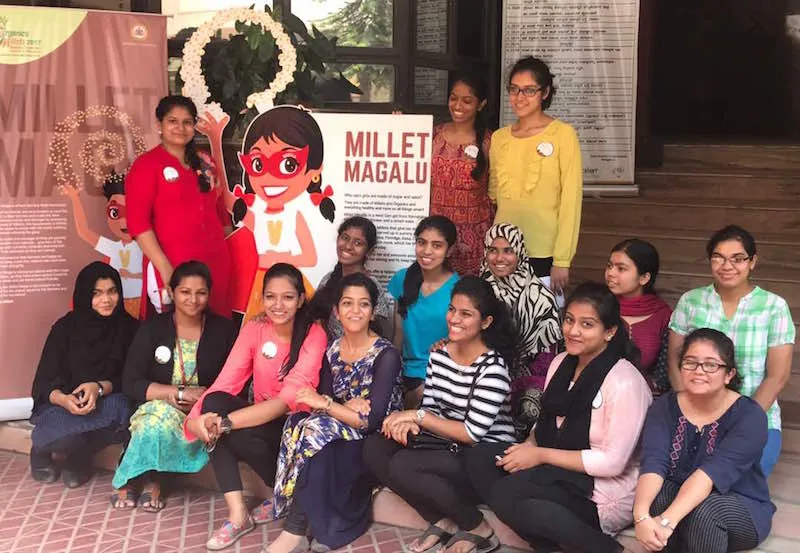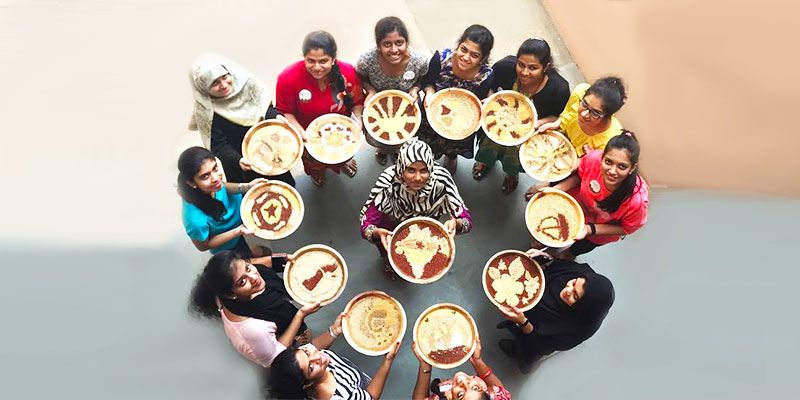The forgotten health food: Karnataka government spearheads campaign to promote millets across all levels of society
In today's world, where climate change is wreaking havoc on the environment and fast-paced lifestyles are causing myriad health issues, millets have been identified as the ‘super food’ that can solve a multitude of problems. The Department of Agriculture, Government of Karnataka, has taken the onus of bringing millets to the forefront of discussions on nutrition and the environment.
Spearheaded by Karnataka Agriculture Minister, Shri Krishna Byre Gowda, the state government is actively working towards highlighting the importance of millets for both consumers and producers, while creating channels to improve the demand and supply of the grains.
The National Organic and Millets Trade Fair, to be held at Tripura Vasini, Palace Grounds, Bengaluru, from April 28 to April 30, 2017, will bring together farmers, suppliers, restaurateurs, consumers, exporters, retailers, nutritionists, and others to establish strong networks between the stakeholders who need to come together to popularise millets.
As a precursor to the national fair, the Department of Agriculture, in association with several institutions working towards popularising millets, conducted a Millets Workshop for Nutritionists on April 25 at the Mount Carmel College in Bengaluru. Other than the nutritional benefits of the grains, speakers at the event also explained how the crop benefits farmers and the environment, and why the food group hasn't gained popularity despite its clear efficacy.
Unhealthy eating habits, spurred by the proliferation of processed foods in peoples' diets, have resulted in the explosive growth of lifestyle diseases. In India, diabetes, hypertension and obesity are the three most common and serious problems afflicting the masses. Fast foods and packaged foods aside, even the staple diet of rice and wheat lacks the nutrition and fibre required to maintain a person's health, says Dr Vilas Tonapi, Director of the Indian Institute of Millets Research.
Millets, with their exceptionally high nutritional value, low glycaemic index, high fibre content and alkaline nature, are the ideal foods to combat several lifestyle diseases, more than other health foods like oats and quinoa. These 'wonder grains' are invaluable in the fight against obesity, diabetes, cancer, hypertension, and anaemia. And since millets are gluten-free, they can greatly benefit the millions of people around the world who suffer from Celiac disease.
“What more can you ask for when you ask for healthy alternatives?” said Shri Krishna Byre Gowda, Karnataka Agriculture Minister.
Nutritionists and doctors, buoyed by several promising studies on the health benefits of millets, have begun counselling their patients to incorporate millets in their daily diets. Hema Aravind, Chief Dietitian at M.S. Ramaiah Medical College and Hospital, actively promotes the importance of a millet-inclusive diet to her patients. Since people are hesitant to change their diets, she urges clinics and hospitals to educate their patients of the benefits of millets and counsel them about how they can incorporate them effortlessly in their daily diets.
“A balanced diet is important. People should incorporate all food groups in their diet,” Aravind says. She suggests that cooking millets with rice, starting with 10-20 percent proportion of millets, is a good way to start consuming these grains.
There are several million people across the planet who suffer from debilitating malnutrition. “From Ethiopia to India to Ghana to Guatemala, nutritional insecurity is an issue in both rural and urban areas,” Dr Tonapi says. Since millets are more effective at satiating appetites than rice (150 grams of millets are as filling as 500 grams of rice), Dr Tonapi says that placing an importance on the ‘smart food’ will play a major role in abating one of the world's most serious crises.
Acknowledging the seriousness of climate change, Shri Byre Gowda said millets were the ‘smart crop of the 21st century’ due to their low carbon and water footprint. Millets consume 80 percent less water than crops like sugarcane, rice, and wheat, and require 70 percent less use of chemical fertilisers. Millets are also drought tolerant, pest resistant, high yield, low risk crops that require a low input cost which makes them extremely beneficial to farmers.
Karnataka, which was the first Indian state to implement an organic farming policy in 2004, is now actively working to certify and empower millet farmers by conducting several awareness programmes on the importance of millets.
The problem, however, is not production but consumption. “It's not supply push, but demand pull that needs to happen,” said Dr Tonapi.

The lack of demand stems from the prevailing social mentality that millets are a ‘poor man's food.’ The Indian public, emulating western trends, has cultivated imbalanced diets loaded with excess sugar and carbohydrates — leading to widespread health problems in the country. But while this trend is a recent one, the stigma against millets can be traced back to India's ‘Green Revolution’ in the 1960s. The agriculture boom resulted in crops like rice and wheat being perceived as ‘high society food’ while millets were viewed as the poor man's fare, according to Dr Tonapi.
And even though a greater number of Indians are acknowledging the need to follow healthy diets, it's foods like oats and quinoa that are gaining popularity simply because they are more widely accepted in foreign countries, according to Shri Byre Gowda. Rationally, however, the fact is that the “poor man's food is now the rich man's saviour,” he said. “The irony is that in western countries, rich people eat healthy while the poor are more reliant on unhealthy, junk food while the opposite holds true for India,” said Jayaram, an organic farmer, activist, and founder of the Green Path Organic State.
Informing people about the health benefits of millets is only the first part of the mission. Getting them to incorporate it in their diets is where the real challenge lies. Arun Kaulige, owner of Kaulige Foods — a company that aims to ‘bring millets to every Bengalurean's plate’ — says that this can be accomplished by breaking certain myths associated with millets, primarily that they are special foods (they should be viewed as staple foods), and that they are not as tasty as any other alternative. Food companies such as his are creating a wide range of packaged millet-based snack foods that are easier for people to consume.
For that to be successful though, a mainstream acceptance of millets needs to occur and there are several restaurants and prominent chefs who are working towards this goal. Chef Selvaraj, employed at the Vivanta by Taj in Bengaluru, is one of the leading innovators in millet-based foods. While most restaurateurs focus on using millets in traditional foods like dosas, idlis, and bisi-bele bath, he recreates cuisines from all over the world with millets. Chef Selvaraj has come up with millet-based recipes for pastas, stews, pizzas, cakes, pastries, and even ice creams. By bringing such foods to his typically well-to-do clientele, he hopes to change the perception of millets at the very top of the societal hierarchy.
“There's more talk and less use of millets today,” said Dr KC Raghu, food technologist and CEO of Pristine Organics. “Ragi is the by far the most popular and there's a need to spread knowledge about the other millets.”
The awareness movement has identified the young population of India as its most powerful advocate. Leveraging the immense power of social media and spreading awareness at the grassroots level in colleges, online campaigns like #LetsMillet and several workshops to educate students have been launched.

Mount Carmel College, where the ‘Millets Workshop for Nutritionists’ was conducted, also hosted a student competition called #MilletArt in which students used millet grains to create artwork.
Anjana Nair, a consultant nutritionist and marketing professional, emphasised the need to focus on the branding and marketing of millets. “We have forgotten what we have and we need to revisit it,” she says.
The National Trade Fair – Organics & Millets 2017 -- is being organised by the Department of Agriculture, Govt. of Karnataka, Karnataka State Agricultural Produce Processing and Export Corporation Limited (KAPPEC), State Agricultural Universities and Jaivik Krishik Society on April 28-30. Click here for more details
YourStory is a partner for this event.











![[Funding alert] Contactless retail tech startup Gobbly raises $500K from Sauce.vc](https://images.yourstory.com/cs/2/b87effd06a6611e9ad333f8a4777438f/Imagefskc-1594011063679.jpg)